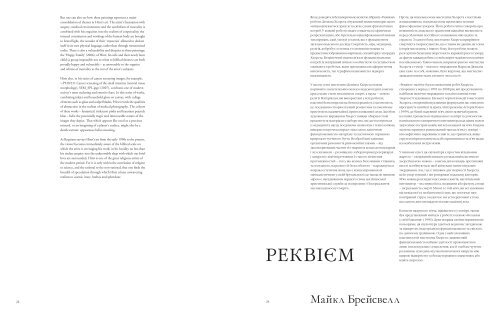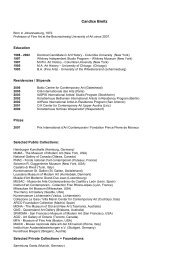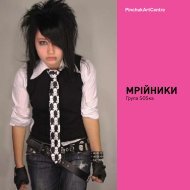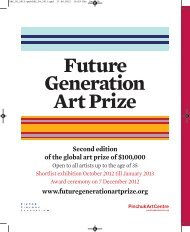The extent to which Hirst’s art traverses, to intense moral purpose, the perceived boundaries between ‘the serious jest’ (to borrow Goethe’s description of his moral allegory, ‘Faust’) and a sepulchral, meditational stillness can be seen in the works he has made using medical equipment, clinical fixtures and drugs. ‘Where There’s a Will, There’s a Way’ (2007) comprises a white stainless-steel frame, housing stark metal shelves on which are set neat identical clusters of the antiretroviral pills used to treat HIV/AIDS. Also referring to charity (in early 2008 Hirst conceived and organised a major auction of works by leading artists, all the proceeds of which were used to assist people suffering from HIV/AIDS), ‘Where There’s a Will, There’s a Way’ is accompanied by one of the artist’s Fact Paintings (the generic title Hirst gives to his paintings made from photographs), ‘HIV AIDS, Drugs Combination’ (2007), depicting an outstretched hand, in the open palm of which are the same three drugs as are grouped in the cabinet. Together, these works conflate a form of social realistic figuration with Hirst’s distinctive and chilling use of medical and scientific imagery. The aesthetics of the clinical environment and the drugs cabinet are thus set against the traditional visual language of a framed painting. This creates an effect which is at once visually elegant in its neatness and use of multiple items, and disquieting in the subtly morbid coldness of the ranged pills. One might be looking at jewels, or a pictorial representation of a remaining span of human life, measured out in the drugs by which it will be maintained. An analogous piece to ‘Where There’s a Will, There’s a Way’ might be ‘Purgatory’ (2008), in which a similar framing and shelving device (yet imperially gold-plated) is used to house hundreds of cigarette and cigar stubs. The dangers to health of smoking tobacco are suddenly thrown into a new configuration. As positioned by the portentous, theological title of the work, the cigarette and cigar ends seem to articulate despair, and ironically to enshrine a material record of addiction and compromised mortality. The deft conflation in Hirst’s art of scientific and aesthetic systems tends always to create a further layer of mystery and inscrutability to the work, a quality that is at once futuristic and elegaic, sinister and melancholy. ‘Night of the Long Knives’ (2008) (the title, ominously, a seeming reference to a Hitlerite purge within the Nazi party in 1934) is both an example of such aesthetic qualities, and also a demonstration of Hirst’s relationship to sculptural materials and forms. A six-panelled set of stainless-steel and glass cabinets, its shelves filled with neatly arranged surgical equipment, ‘Night of the Long Knives’ is at once chilling and compelling; the viewer is similarly drawn to the tactile nature of the work, and its acoustic presence. In its order and precision, this is a work which implies there is a tension between fragility and chaos, delicacy and struggle. Most directly, it speaks to the viewer of the reality of surgery – a process which remains, for the most part, hidden behind the white internal shutters of general anaesthetic. Hirst’s exploration of mortality, and, more important, the human ability to conceive mortality as a fact, might be seen as the basis of his art. The awareness of death and the lifelong process of dying are themes which run throughout his work. But this concentration on mortality is matched and framed by an equivalent fascination with dramatic spectacle, awe and wonder – qualities which within classic romantic art would fall within the constitution of the sublime. Hirst’s art merges sublime spectacle with not only allegories of mortality, but also direct representations of death’s reality, and the vulnerability of the body. In the art of Damien Hirst, as in the art of Francis Bacon, the body is often depicted in vexed and contorted corporeality. ‘Death Explained’ (2007) comprises a mature shark bisected down its length, and the two halves placed in matching steel and glass tanks, which stand side by side. This work is shown in an installation with his ‘Death Denied’, comprising a single shark, which is the same length as the one in ‘Death Explained’. Together, these two works are part of a two-work series entitled: ‘Coming to Terms with and Trying to Understand the Complexity of Feelings and Ever Changing Fears and Doubts that Every Human Being Experiences when Faced Every Moment with the Unfathomable Uncertainties of Death’. This work refers in part to the now mythic iconography of Hirst’s own art making – notably to his sculpture ‘The Physical Impossibility of Death in the Mind of Someone Living’ (1992), in which, famously, a shark was placed in a tank of formaldehyde. In the work comprising ‘Death Explained’ and ‘Death Denied’ we see a similar ensemble of media articulating the same human consciousness of mortality. The reality of our brief, fragile and unpredictable residency on Earth is spelt out with the same directness – part illustration, part fable – that can be found in pre-Christian or tribal art. Throughout the art of Damien Hirst there exists a primal power of the sort identified by the illustrious art historian E.H. Gombrich at the beginning of his classic book ‘The Story of Art’ (1950): “We cannot hope to understand these strange beginnings of art unless we try to enter the mind of the primitive peoples and find out what kind of experience it is which makes them think of pictures, not as something nice to look at, but as something powerful to use. I do not think it is really so difficult to recapture this feeling. All that is needed is the will to be absolutely honest with ourselves, and see whether we, too, do not retain something of the ‘primitive’ in us. Instead of beginning with the Ice Age, let us begin with ourselves.” Such a founding statement of analysis and intent could be said to describe precisely the urgency and force of the art of Damien Hirst. The nature of spectacle in Hirst’s art is profound. There is a sense in which Hirst, quite simply, wants his art to take the viewer’s breath away – to leave them astounded and awed. (Hirst has remarked that he would like to create a rainbow in a gallery; also, that he considers a perfect white sphere to be an ideal piece of art.) This understanding of showmanship, and the use of spectacle as a medium for art making, allows Hirst not simply to engage with the viewer in a direct, highly emotive way, but also to play conceptual, artistic and thematic games with the relationship between spectacle and empathy. In an age when visual culture is ubiquitous, multimedia and monumental, Hirst creates an art which is simultaneously refined, poetic and declamatory. His art is precisely balanced between a cold stillness, redolent of scientific technology, and the most vivid depictions, in terms of both religion and natural science, of the transience of life. This second component of his artistic language is particularly pronounced in the works Hirst has made using butterflies and butterfly wings. In Requiem there are several major examples of these works, including the seven-panel butterflies on household gloss on canvas, ‘Ariel’ (2006) (titled after the poem by Sylvia Plath), and the six panels, butterflies and household gloss on canvas, ‘Six Lovely Months’ (2008). These two works are perhaps the most formally simple of Hirst’s butterfly pieces, and they establish a powerful visual tension between the frailty and exquisite colours of the butterflies, and the somewhat drab, industrial colours (like shades of car paint) of the household gloss backgrounds on which they are fastened. The effect is both museological and poetic: the sense of a tiny life arrested, and of a transient, short lived beauty. It is typical of Hirst’s acuity to work with a medium – in this case butterflies – that is poetic and laden with symbolic meanings in itself; the medium becomes the meaning of the work, its language heightened. Historically, in Greek, Celtic, early Christian and Chinese mythology, the butterfly has been regarded a symbol of the soul. Indeed, ‘Psyche’ is the Greek word for both ‘the soul’ and ‘butterfly’, giving rise to the notion that human souls become butterflies while seeking reincarnation. In some Christian symbolism, also, Christ is depicted with a butterfly in His palm. Such mythological and religious or spiritual underpinning seems in place in Hirst’s butterfly work ‘Karma’ (2008) – with its reference to the accumulation and exchange of a soul’s moral balance – and the brilliantly patterned triptych ‘Doorways to the Kingdom of Heaven’ (2007), based on the extravagant design of cathedral windows. (Hirst has also made several butterfly paintings titled after specific psalms.) Hirst makes work which mixes media – his paintings can contain other elements, just as some of his sculpture shares aspects of painting. In a manner comparable to that of Marcel Duchamp and Richard Hamilton, the art of Damien Hirst is conceptually driven to seek the most effective and original form for each individual idea. Unique to Hirst, however, is the constant interplay and reference between different works and series of works. It is as though he brings an idea to life, and then allows it to run and develop through the continuing progress of his art. This brings aspects of different works into sudden conflation, as well as looping back to re-engage retrospectively with what has become the art historical iconography of his earlier themes or motifs. ‘Beautiful Explosion of Vanity Painting (with butterflies)’ (2007) combines Hirst’s iconic spin painting style with the motif of his butterfly paintings. These spin paintings with skull images on them are titled in a specific way: they start with ‘Beautiful’ and end with ‘Painting’, and have the name of a god and an altered state in the title. Thus, if there are four skulls on the same painting, there are four altered states and four gods. The result is a layered effect – a density of Hirstian qualities, as though to concentrate the very qualities, thematic and stylistic, for which the artist has become so famous. There is a richness of mood to these works, which combine various aspects of Hirst’s aesthetic, and introduce an epic scale. In ‘Beautiful Zeus Maia Freya Isis Meditative Hysterical Sensory- Deprived Dream Painting’ (2007), for example, the dramatic vortices of paint (at once reminiscent of acceleration and cyclone) which typify Hirst’s spin paintings is encoded with four human skull motifs – which in their turn bring to mind Hirst’s various works with human skulls, and most notably perhaps his ‘For the Love of God’ (2006). At once graphic, monumental and touched with the spirit of Pop Art (the repeated skulls have a Warholian vacuity to their empty yet pointed gaze), this enormous canvas appears to be descended from a tradition of dramatic, ‘visionary’ painting. There is a quality of biblical revelation to the manner in which the skulls appear to be manifest within a revolutionised cosmos. At the same time, as the title of the work suggests, there is a feeling of troubled dreamscape to the painting. Hirst’s paintings appear at once intensely crafted and imbued with a mechanistic impersonality. Some combine abstraction and figuration, as can be seen in the series of skull paintings, for example, ‘Beautiful Minerva Catatonia Painting’ (2007), in which a human skull sits centrally within the multi-coloured screaming perspective of a spin painting. These are perhaps the closest Hirst has come in his painting to pursuing the graphic style of Pop Art. For Hirst, however, the cool of Pop styling is radically de-stabilised by the dizzying use of colour to convey movement reaching critical mass. It is a style which, in terms of Pop Art, might only be compared to Warhol’s use of ‘camouflage’ in some of his late paintings and self portraits. Elsewhere, specifically in the series The Birth Paintings, made by Hirst in 2006 within the genre of his Fact Paintings, there is an eerily pale and watery evocation of artificial light, disclosing surgical wounds and the newly born baby surrounded by darkness. As with all of Hirst’s Fact Paintings, these works appear both photo-realistic and traditionally representational – ‘Closing the Wound I, II and III’ (2006) – an effect which radically heightens, and somehow renders more raw, the intimate, tender and explicit nature of their subject matter. 22 23
But one can also see how these paintings represent a major consolidation of themes in Hirst’s art. The artist’s fascination with surgery, medical environments and the symbolism of mortality is combined with his enquiries into the realism of corporeality; the internal constitution and workings of the human body are brought to brutal light, the wonder of their ‘mysteries’ allowed to declare itself in its own physical language, rather than through romanticised codes. There is also a vulnerability and disquiet to these paintings; the ‘Happy Family’ (2006), of Hirst, his wife and their newly born child (a group impossible not to relate to biblical themes) are both proudly happy and vulnerable – as answerable to the vagaries and whims of mortality as the rest of the artist’s subjects. Hirst also, in his series of cancer screening images, for example, ‘’(2007), confronts one of modern society’s most enduring and emotive fears. In this series of works, combining inkjet and household gloss on canvas, with collage elements such as glass and scalpel blades, Hirst reveals the qualities of abstraction in the realism of medical photography. The colours of these works – fantastical, iridescent pinks and luxuriant peacock blue – belie the potentially tragic and immoveable nature of the images they depict. That which appears like coral or a precious mineral, or an imagining of a planet’s surface, might also be a death warrant: appearance belies meaning. As Requiem surveys Hirst’s art from the early 1990s to the present, the viewer becomes immediately aware of the biblical scale on which the artist is envisaging his work; in his lucidity no less than his tireless enquiry into the unknowable sleep with which our brief lives are surrounded, Hirst is one of the great religious artists of the modern period. For it is only within the correlation of religion to science, and the rational to the non-rational, that one finds the breadth of speculation through which Hirst relates unwavering realism to cosmic irony, bathos and splendour. 24 25
- Page 4 and 5: Victor Pinchuk Requiem is not just
- Page 6: Damien Hirst, at 43 years old, has
- Page 9 and 10: DH Wow! Annals of art history? (cam
- Page 11 and 12: 16 21
- Page 13: As described with such formidable c
- Page 18 and 19: With Dead Head 1991 Photograph on a
- Page 21 and 22: The History of Pain 1999 MDF, stain
- Page 23 and 24: Where There’s a Will, There’s a
- Page 25: 3 HIV/AIDS Drugs 2008 Oil on canvas
- Page 28 and 29: Death Explained 2007 Glass, steel,
- Page 30 and 31: Beautiful Minerva Catatonia Paintin
- Page 32 and 33: Beautiful Osiris Euphoria Painting
- Page 35 and 36: Ariel 2006 Butterflies and househol
- Page 37 and 38: Argininosuccinic Acid 1995 Househol
- Page 40 and 41: The Last Supper 2005 Silkscreen on
- Page 42 and 43: Saint Bartholomew, Exquisite Pain 2
- Page 44 and 45: Doorways to the Kingdom of Heaven 2
- Page 46 and 47: False Idol (detail) 2008 Calf, gold
- Page 48 and 49: Karma 2008 Butterflies and househol
- Page 50 and 51: Idolisation 2007 Butterflies and ho
- Page 52 and 53: And the Lord God Made Them All (det
- Page 55 and 56: Horror at Home 1995 GRP composites,
- Page 57 and 58: Nothingness 2008 Glass, steel, MDF,
- Page 59 and 60: Second Series Biopsy: M132/655- Leu
- Page 61 and 62: Birth (Cyrus) 2006 Oil on canvas 18
- Page 64 and 65:
Happy Family 2006 Oil on canvas 36
- Page 66 and 67:
2007 UV inks and household gloss on
- Page 68 and 69:
2007 UV inks and household gloss on
- Page 71 and 72:
The Promise of Money 2003 Resin, co
- Page 73 and 74:
Temple (detail) 2008 Lacquered pain
- Page 75 and 76:
Heaven Can Wait (detail) 2008 Butte
- Page 78 and 79:
Hydrogen Tetrachloroaurate 2008 Ena
- Page 80 and 81:
Au-195m 2008 Enamel paint and house
- Page 82:
Lullaby Autumn 2002 Stainless steel
- Page 85 and 86:
Beautiful Elena Orchid Painting 200
- Page 87 and 88:
Beautiful, V for Victor, V for Vict
- Page 89 and 90:
Revolution 2008 Flies and household
- Page 91 and 92:
The Child’s Dream (detail) 2008 F
- Page 93 and 94:
Purgatory 2008 Gold-plated stainles
- Page 95 and 96:
I Want to Spend the Rest of My Life
- Page 97 and 98:
Away from the Flock 1994 Glass, ste
- Page 99 and 100:
Epitaph 2008 Butterflies, skull and
- Page 101 and 102:
The Circle of Life 2008 Two cat ske






